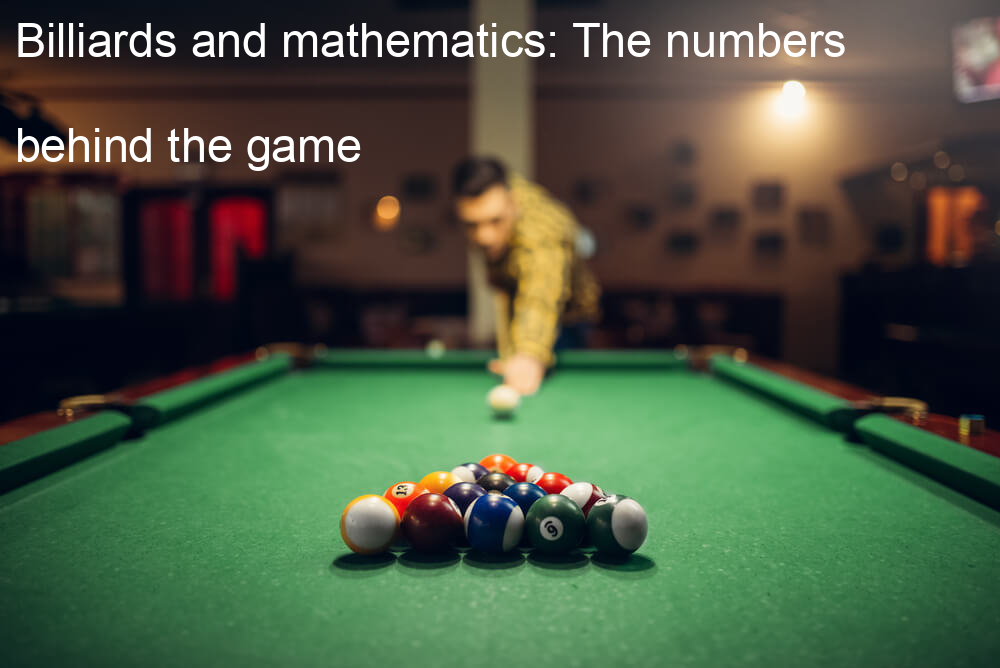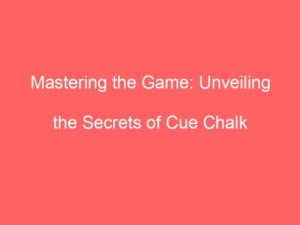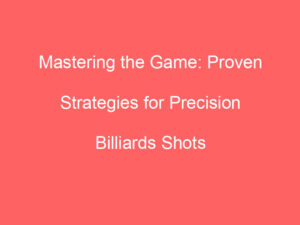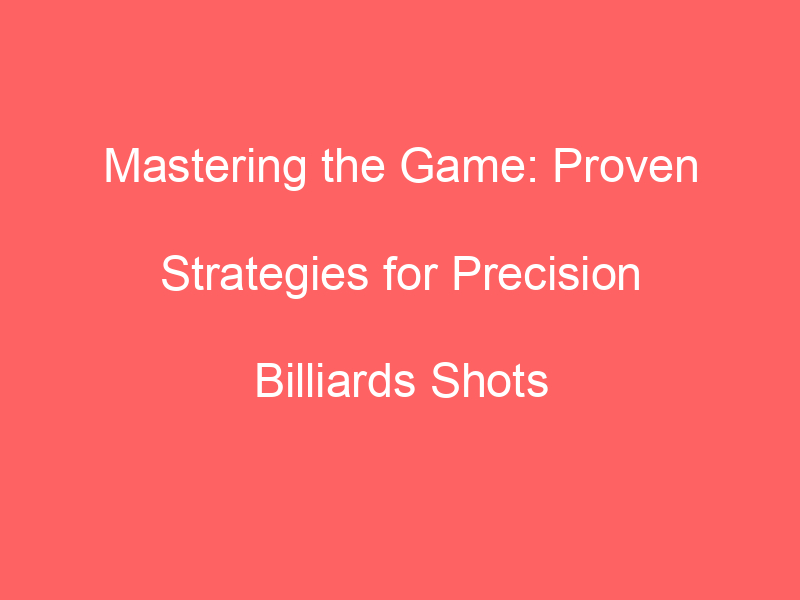Are you a billiard player who always wanted to know why certain shots seem so difficult? Or are you a working person trying to wrap your head around the mathematics behind this fun yet complex game? Look no further – in this blog post, we’ll explore the mathematical concepts that explain exactly why some of those tricky shots can be extra challenging.
We’ll look at the common pool and snooker lingo through a mathematical lens and break down exactly how numbers contribute to the gameplay. So whether you’re an experienced billiards player or just getting started, by the end of this post you’ll have an even better understanding of what makes billiards such an enjoyable challenge for players all over the world.
How do mathematical billiards work?
Have you ever wondered how billiards is related to math? Believe it or not, mathematical billiards is a real thing! The concept is based on the idea of the physics and behavior of different objects which collide and rebound from one another. This study is done on a flat surface. The mathematics used features a lot of geometry and analytic geometry which produce amazing results when combined – all with the intention of creating models for motion within the game.
These models provide a deeper understanding of how the game can be played with precision and control, allowing people to become masters at maneuvering balls around the table in order to set up very challenging shots. It turns out, there’s so much more we can learn from this classic board game than just how to aim, and practice makes perfect!
How do you play billiards?
Playing billiards can be extremely fun and satisfying. It is an enjoyable pastime that doesn’t require huge amounts of practice or skill, yet it can still provide hours of entertainment. To play standard eight-ball billiards, you need to hit your grouping of balls into a pocket, as well as the black eight-ball to finish the game. When taking a shot, make sure the cue stick contacts the white “cue” ball first in order for it to count!
If you looking for a challenge with other players around you, then carom billiards could be up your alley. Carom billiards requires three “object” balls in order to score points. You must hit each object ball in succession without hitting them twice and pot at least one of them. The possibilities are endless when it comes to playing billiards!
How does a billiard ball bounce?
Have you ever watched a game of billiards and wondered how that little white ball always seemed to rebound off the edges no matter what angle it was struck from? The physics behind this is both fascinating and simple! When the cue stick hits the ball, its momentum causes it to bounce off the cushions of the billiard table. How much that momentum is dissipated as heat depends on how fast and how hard it was struck.
As a result, you can actually control how much and in which direction a billiard ball will bounce by adjusting your strike speed and angle. Pretty cool stuff!
What is the path of a billiard ball?
Watching a billiard ball in motion is mesmerizing. After a shot is taken, the ball follows a predictable path across the table before coming to a rest. The force of the strike determines the speed of the ball and can even cause it to spin in place or loop around obstacles on its way to its destination. Of course, physics-dictated paths can be disrupted by accidental strikes from other balls or blatant cheating from slippery hands. In any case, knowing the angles and power needed for perfect precision wins games, whether you’re playing for money or bragging rights.
Finally, the relationship between Mathematics and Billiards
From the physics of the billiards ball’s roll to the probability of playing a perfect game, we can see that there is much more to billiards than simply throwing a white ball and following it blindly. Though mathematics may seem intimidating and complex, it truly is amazing what small calculations can teach us about seemingly simple concepts. Billiards not only teaches us tactical problem-solving skills; it also shows us ingenious ways in which geometry and other mathematical disciplines are immensely useful in everyday life.
As Albert Einstein once said, “Out of necessity, mathematics forces one to be logical.” Through its marriage with this time-honored game, mathematics deepens our appreciation for it even further by demonstrating the strength of its immortality and power.














